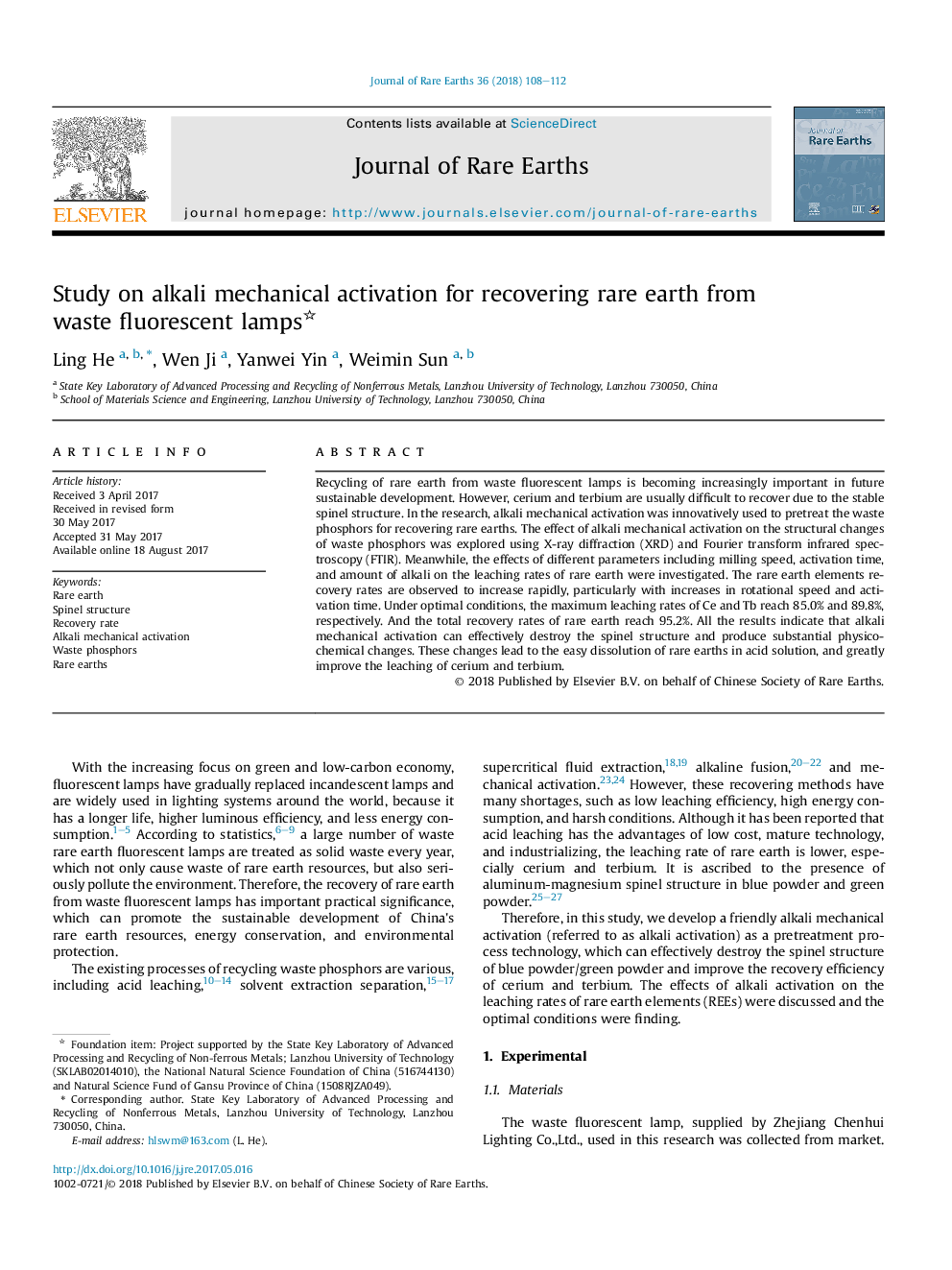| Article ID | Journal | Published Year | Pages | File Type |
|---|---|---|---|---|
| 7697086 | Journal of Rare Earths | 2018 | 5 Pages |
Abstract
Recycling of rare earth from waste fluorescent lamps is becoming increasingly important in future sustainable development. However, cerium and terbium are usually difficult to recover due to the stable spinel structure. In the research, alkali mechanical activation was innovatively used to pretreat the waste phosphors for recovering rare earths. The effect of alkali mechanical activation on the structural changes of waste phosphors was explored using X-ray diffraction (XRD) and Fourier transform infrared spectroscopy (FTIR). Meanwhile, the effects of different parameters including milling speed, activation time, and amount of alkali on the leaching rates of rare earth were investigated. The rare earth elements recovery rates are observed to increase rapidly, particularly with increases in rotational speed and activation time. Under optimal conditions, the maximum leaching rates of Ce and Tb reach 85.0% and 89.8%, respectively. And the total recovery rates of rare earth reach 95.2%. All the results indicate that alkali mechanical activation can effectively destroy the spinel structure and produce substantial physicochemical changes. These changes lead to the easy dissolution of rare earths in acid solution, and greatly improve the leaching of cerium and terbium.
Related Topics
Physical Sciences and Engineering
Chemistry
Chemistry (General)
Authors
Ling He, Wen Ji, Yanwei Yin, Weimin Sun,
